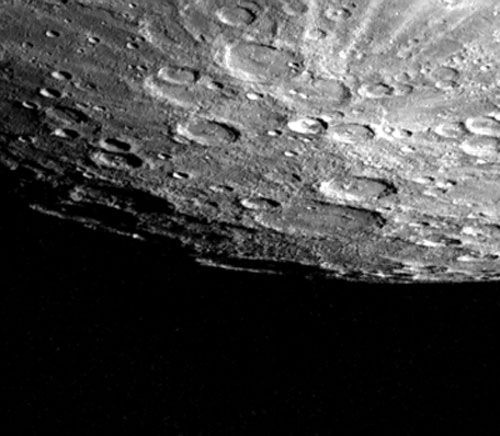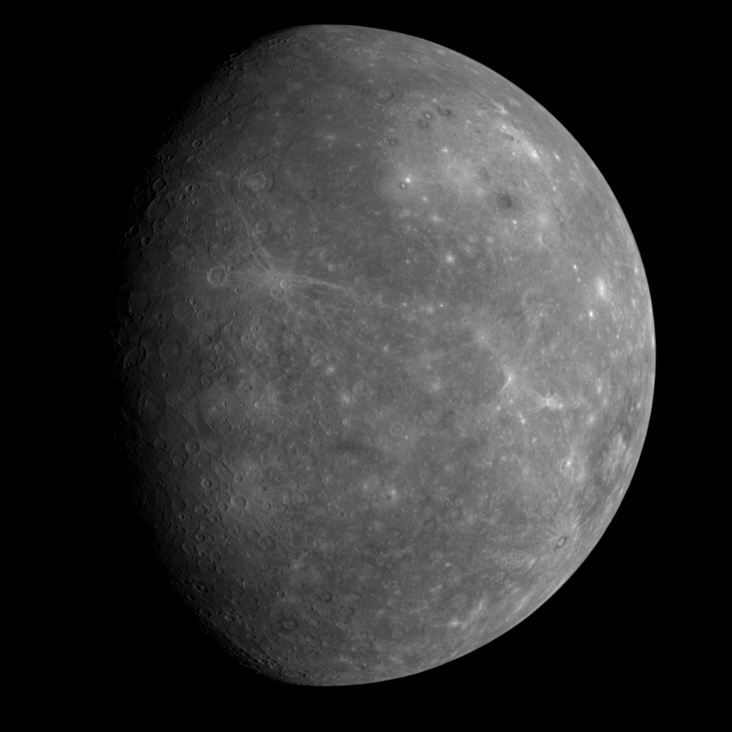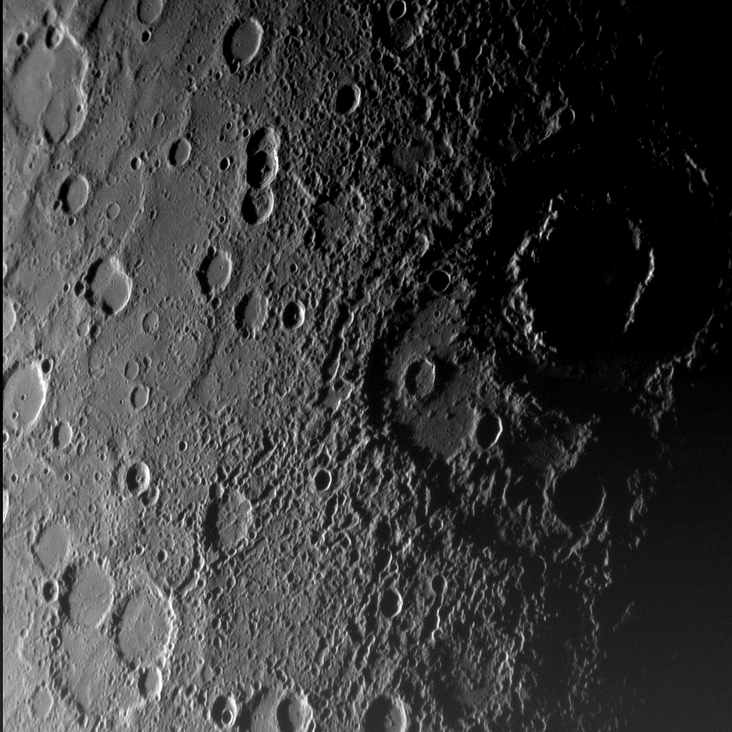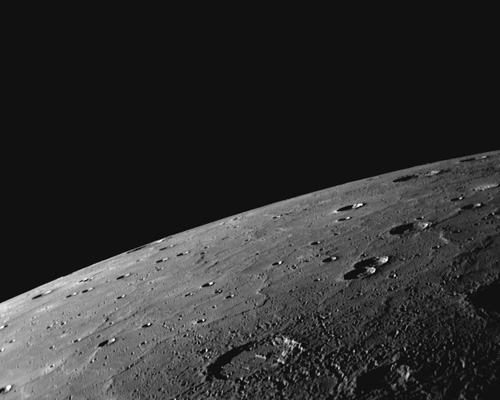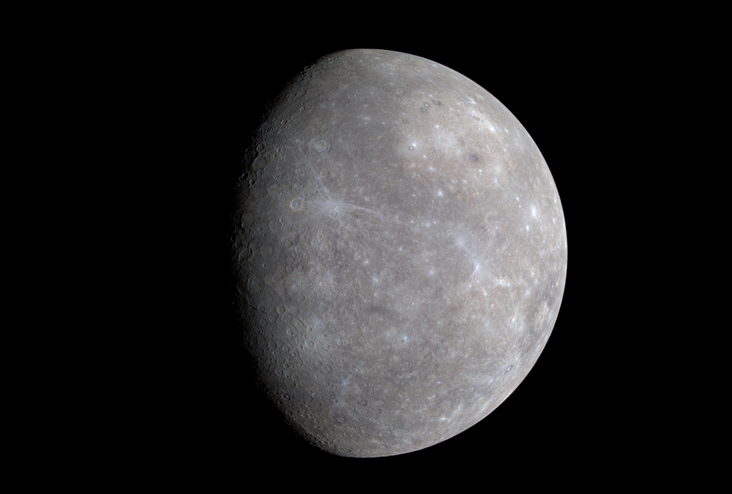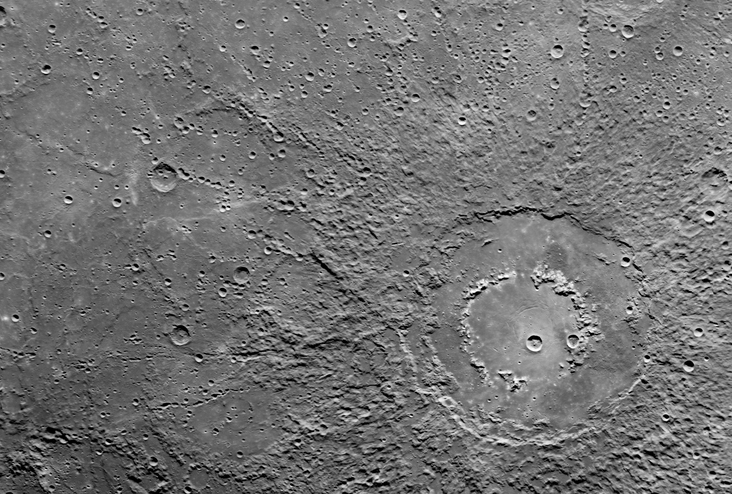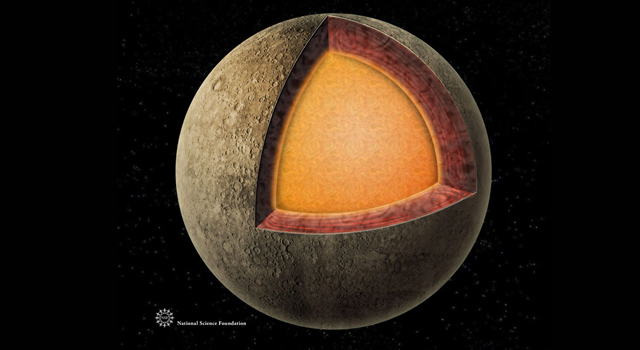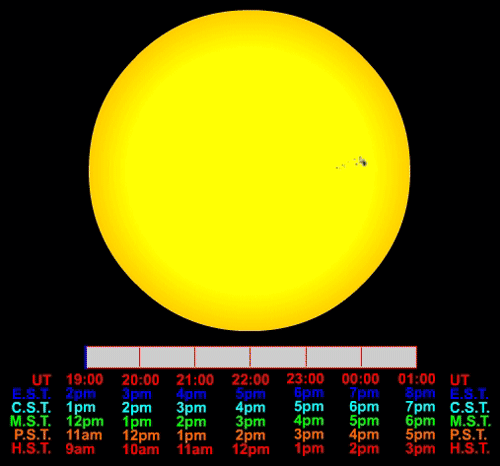Mercury is the closest planet to the Sun.
It has a very thin atmosphere meaning that there is great variations in the temperature between day and night. During the day, the temperatures can rise to as high as 450℃ and at night drop to minus 167℃.
The core is made of solid Iron which stretches three quarters of the way to the surface. This makes it the second most dense planet in the Solar System after Earth. It also makes up about 42% of its mass which is the largest core to planet size ratio in the Solar System.
Why it has such a big core compared to it's size is a mystery. Most astronomers believe that it is because Mercury was much bigger in the early days of the Solar System, but was struck by something about 1/6th it's mass and several hundred kilometres in diameter, that would have stripped away most of it's outer shell.
The best time to view Mercury is at sunset and before sunrise. It appears as a bright star. Sometimes, it passes in front of the Sun which can be observed by special telescopes on Earth (see the animation in the gallery).

